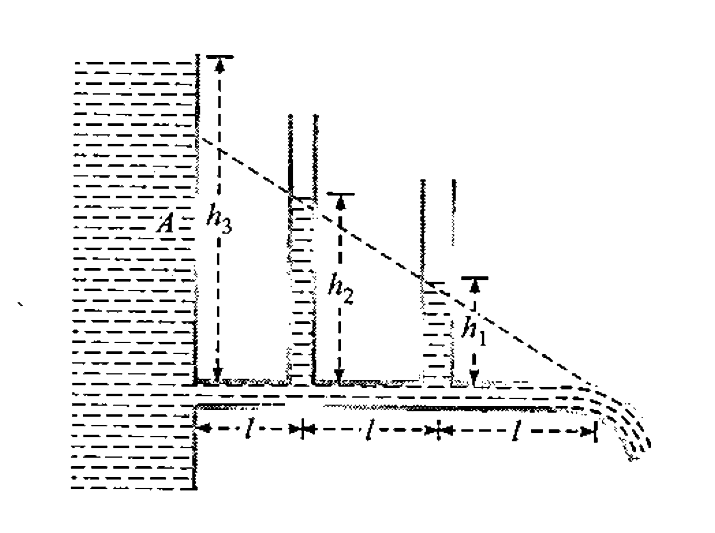In Fig , if h1−h0=1.0cm,h0=100cm,andt=20∘C , what is the value of γ for the liquid ?
The correct Answer is:γ=1.0[(100)(20)=500×10−6/∘C
Topper's Solved these Questions
- BOOK - RESNICK AND HALLIDAYCHAPTER - TEMPERATURE, ZEROTH LAW OF THERMODYNAMICS AND THERMAL EXPANSION EXERCISE - PROBLEMS24videos
TEMPERATURE, ZEROTH LAW OF THERMODYNAMICS AND THERMAL EXPANSION
- BOOK - RESNICK AND HALLIDAYCHAPTER - TEMPERATURE, ZEROTH LAW OF THERMODYNAMICS AND THERMAL EXPANSION EXERCISE - PRACTICE QUESTIONS (Single Correct Choice Type)33videos
TEMPERATURE, ZEROTH LAW OF THERMODYNAMICS AND THERMAL EXPANSION
- BOOK - RESNICK AND HALLIDAYCHAPTER - TEMPERATURE, ZEROTH LAW OF THERMODYNAMICS AND THERMAL EXPANSION EXERCISE - PRACTICE QUETIONS (Integer Type)4videos
TEMPERATURE, ZEROTH LAW OF THERMODYNAMICS AND THERMAL EXPANSION
- BOOK - RESNICK AND HALLIDAYCHAPTER - RIGID BODY DYNAMICS-IIEXERCISE - PRACTICE QUESTIONS (Integer Type)2videos
RIGID BODY DYNAMICS-II
- BOOK - RESNICK AND HALLIDAYCHAPTER - THE FIRST LAW OF THERMODYNAMICSEXERCISE - PRACTICE QUESTIONS ( INTEGER TYPE )3videos
THE FIRST LAW OF THERMODYNAMICS
Similar Questions
In the arrangement shown in figure a viscous liquid whose density is ρ=1.0g/cm3 flows along a tube out of a wide tank

A. Find the velocity of the liquid flow, if h1=10cm, h2=20cm, and h3=35cm. All the distances l are equal.View SolutionIn the arrangement shown in figure a viscous liquid whose density is 1gm/cm3 flows along a tube out of a wide tank A. Find the velocity of the liquid flow if h1=10cm,h2=20cm,h3=35cm. All the distances l are equal.
 View Solution
View Solution
Knowledge Check
- Question 1 - Select One
If point E(5,h) is on the line that contains A(0,1)andB(−2,−1), what is the value of h?
A−1B0C1D6 - Question 2 - Select One
The length, breadth and thickness of a strip are given by l=(10.0±0.1)cm,h=(1.00±0.01)cm,t=(0.100±0.001)cm. The most probable error in volume will be
A±0.03cm3B±0.111cm3C±0.012cm3Dnone of these
A wave is described by the equation y=(1.0mm)sinπ(x2.0cm−t0.01s).
(a) Find time period and wavelength.
(b) Find the speed of particle at x=1.0cm and time t=0.01s.
( c ) What are the speed of the partcle at x=3.0cm, 5.0cmand7.0cm at t=0.01s?
(d) What are the speeds of the partcle at x=1.0cm at t=0.011 , 0.012and0.013s?View SolutionA wave is described by the equation y=(1.0mm)sinπ(x2.0cm−t0.01s).
(a) Find time period and wavelength.
(b) Find the speed of particle at x=1.0cm and time t=0.01s.
( c ) What are the speed of the partcle at x=3.0cm, 5.0cmand7.0cm at t=0.01s?
(d) What are the speeds of the partcle at x=1.0cm at t=0.011 , 0.012and0.013s?View SolutionA wave is described by the equation y=(1.0mm)sinπ(x2.0cm−t0.01s).
(a) Find time period and wavelength.
(b) Find the speed of particle at x=1.0cm and time t=0.01s.
( c ) What are the speed of the partcle at x=3.0cm, 5.0cmand7.0cm at t=0.01s?
(d) What are the speeds of the partcle at x=1.0cm at t=0.011 , 0.012and0.013s?View SolutionThe height of a motion picture film's frame is 35.0 cm. If 24.0 frames go by in 1.0 s, calculate the total number of frames required to show a 2.0 h long motion picture.
View SolutionThe length, breadth and thickness of a strip are given by l=(10.0±0.1)cm,h=(1.00±0.01)cm,t=(0.100±0.001)cm. The most probable error in volume will be
View SolutionA convering lens has a focal length of 40 cm . Calculate the size of the real image of an object, 4.0 cm in height, for the object distance:
100 cm
Given f=40cm,h0=4cm,andu in different cases. Find: h1 in each case correspoinding to the given value of u.View Solution

